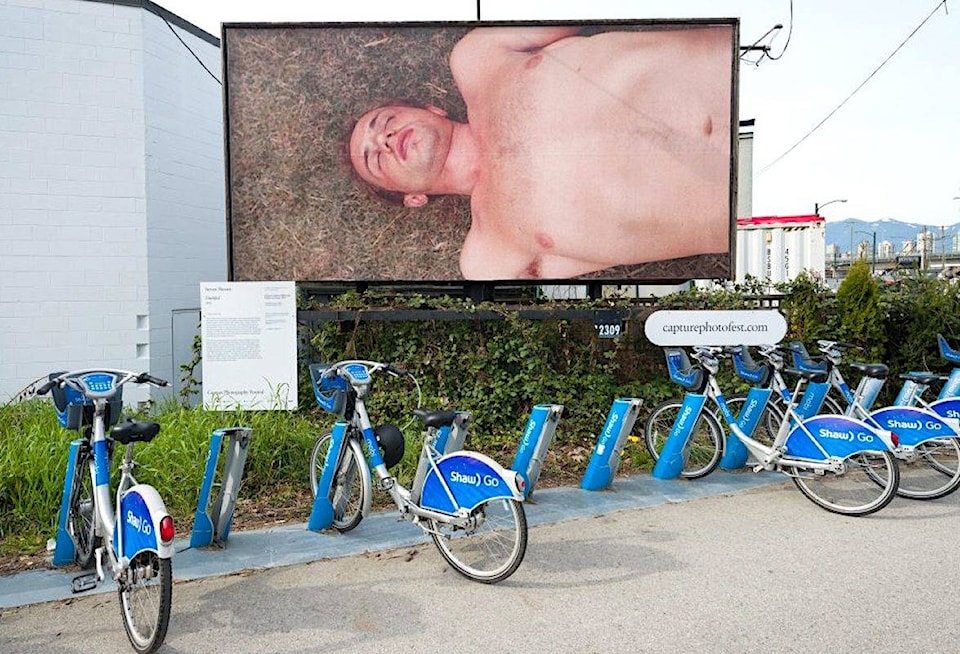By Catherine Heard, Professor at University of Windsor School of Visual Art, The Conversation
The swift removal of seven billboards that were part of a public art display in Vancouver at the beginning of April is a chance to consider how people interpret images and art.
Artist Steven ShearerBดฮิชนูอ๘อ๘ึทs billboard images of people that were displayed as part of Capture Photography Festival began as a collection of found images the artist gleaned from various sources, including eBay.
Blown up and displayed on billboards on March 30, these photographs elicited such vitriolic complaints from the public that they remained on display only for 48 hours before being replaced with stock images.
Context is everything
Context is everything when it comes to understanding images. In their original milieu as informal snapshots, the photographs would have been barely worthy of note. Transposed to billboards where the sleepers we expect are likely to be touting the restorative benefits of mattresses, these commonplace images evoke deeper and more ambivalent responses.
Unlike traditional portraiture, these figures are anonymous Bดฮิชนูอ๘อ๘ึท their identities unknown to artist and to viewer. The viewer might imagine them as being universal figures who symbolize the everyman but, in our digital age, they also speak to the ethics of sharing private images in the public domain. It is possible that a viewer walking past a billboard might recognize themselves or someone they know, plucked from the obscurity of a lost snapshot and catapulted into the public eye.
When ShearerBดฮิชนูอ๘อ๘ึทs images were exponentially enlarged to a billboard scale, the images invaded the familiar streetscape in a way that some viewers found deeply disturbing. Commentator Gordon Harris, an urban planner who decried the billboardsBดฮิชนูอ๘อ๘ึท removal, wondered if some peopleBดฮิชนูอ๘อ๘ึทs outrage was connected with the fact that Bดฮิชนูอ๘อ๘ึทperhaps the images look a little too much like a reflection of peopleBดฮิชนูอ๘อ๘ึทs image of VancouverBดฮิชนูอ๘อ๘ึทs homeless population?Bดฮิชนูอ๘อ๘ึท
Sleeping, intimacy
What did the festival or artist intend? ShearerBดฮิชนูอ๘อ๘ึทs works do not appear to have been meant as provocations. Prior to the project launch, Emmy Lee Wall, the Capture festivalBดฮิชนูอ๘อ๘ึทs executive director, received positive feedback about showing ShearerBดฮิชนูอ๘อ๘ึทs work and the curatorial statement associated with ShearerBดฮิชนูอ๘อ๘ึทs series notes:
Bดฮิชนูอ๘อ๘ึทThe reclining and sleeping figures presented on ShearerBดฮิชนูอ๘อ๘ึทs billboards recall the poses found in religious paintings and sculpture, wherein bodies appear to be in states of ecstasy or seem to defy gravity as if they are floating, having been released of their earthly bonds Bดฮิชนูอ๘อ๘ึทฆ (T)he figures have unintentionally invited passersby to observe them at a heightened level of vulnerability and intimacy.Bดฮิชนูอ๘อ๘ึท
Bดฮิชนูอ๘อ๘ึทThrow-away imageBดฮิชนูอ๘อ๘ึท
By comparison, the low materiality and association of the snapshot as a throw-away image frames ShearerBดฮิชนูอ๘อ๘ึทs sleepers as abject bodies, flawed and vulnerable in their unconscious state. Their gestures can equally be read as ungainly.
In a gallery, the sleeping and reclining figures would be less disturbing. When we enter into the rarified space of the white cube, we are primed to see art. While much of it may be beautiful, we know some of it may challenge us. We are prepared to view images critically.
In comparison, situating the images on billboards heightens the viewerBดฮิชนูอ๘อ๘ึทs unease. Normally, images there are easily decoded commercial messages. On the rare occasion that a billboard depicts disconcerting pictures, for example, diseased lungs in an anti-smoking campaign, words provide context.
Seeing an ambiguous image on a billboard triggers the imagination to construct a narrative. Viewers must reach their own conclusions about the significance. For some viewers this is a pleasant surprise, for others it is mildly perplexing and for a few it can be deeply disturbing.
During the pandemic, more so than in normal times, it is difficult to tolerate uncertainty and to process psychologically complex visuals like the figures in ShearerBดฮิชนูอ๘อ๘ึทs series.
The visuals of ShearerBดฮิชนูอ๘อ๘ึทs found images of bodies are, in part, disturbing because we are uncertain what weBดฮิชนูอ๘อ๘ึทre seeing. For those who are patient enough to spend time with them and to engage with their ambiguity, new worlds open and, as a result, oneBดฮิชนูอ๘อ๘ึทs own world becomes richer.
Like us on and follow us on .
Want to support local journalism? Make a donation



